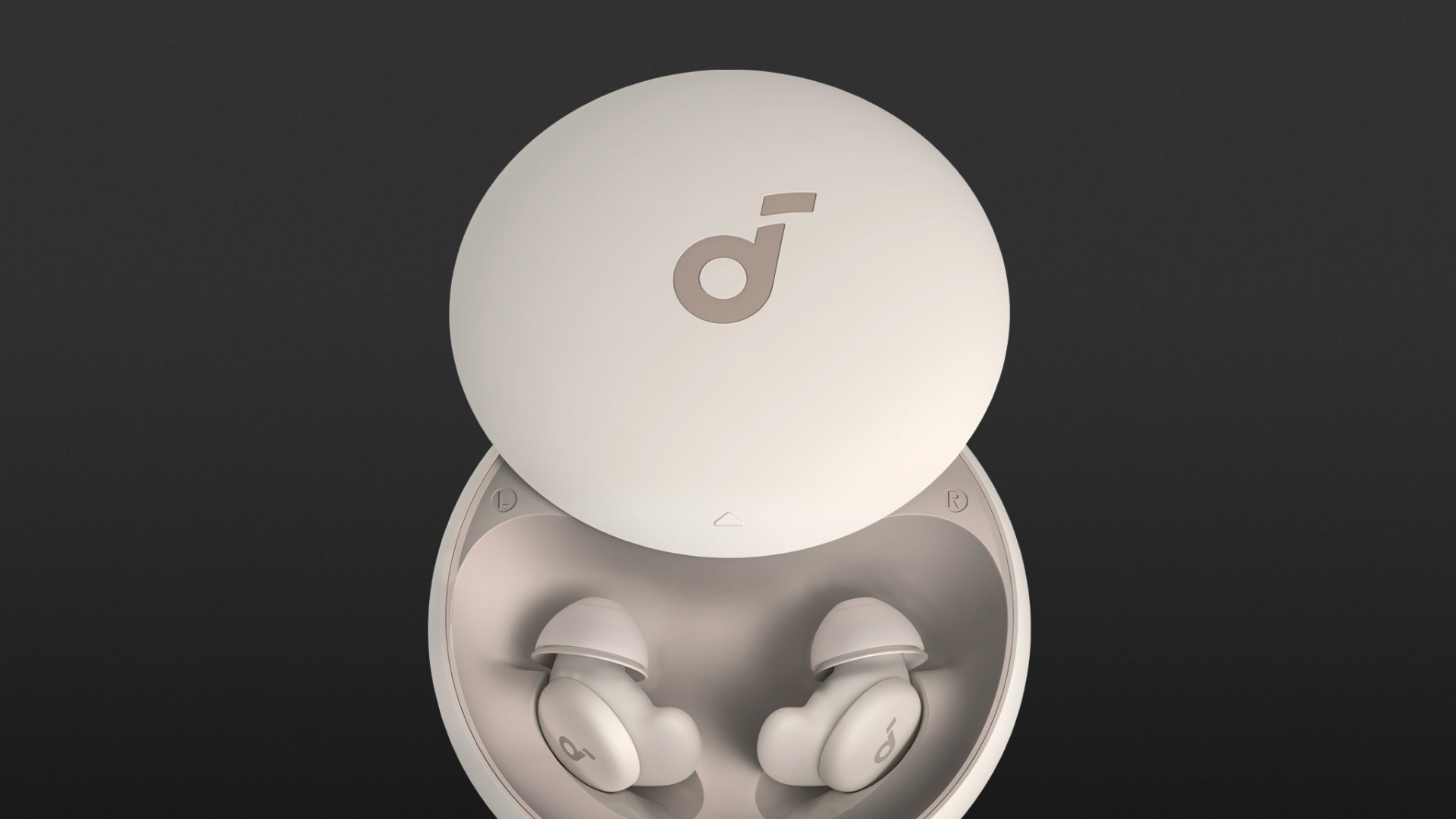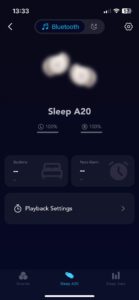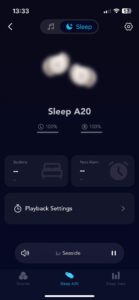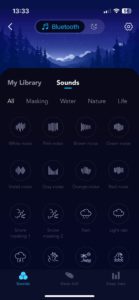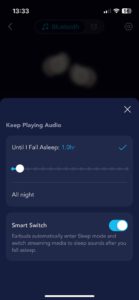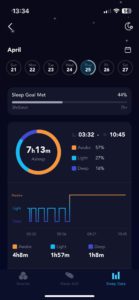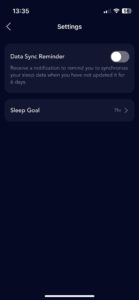The Soundcore Sleep A20 by Anker are headphones specially designed for sleep and are so small and light that even side sleepers should not experience any pressure problems. Thanks to masking sounds and sleep tracking, the Sleep A20 is supposed to influence and monitor sleep behaviour. On paper, this sounds pretty promising, but in practice, you should lower your expectations of blissful sleep thanks to True Wireless technology considerably.
- Form factor and weight
- Suitable for side sleepers (with restrictions)
- Sleep functions and analysis
- Battery life
- Average sound
- No microphones
- No ANC and transparency mode
- No multipoint
- No auto pause
- Sleep data can only be viewed in the app with paired headphones
According to World Sleep Society up to 45% of the world’s population suffer from poor sleep. This not only lowers mood and performance but also increases the risk of chronic diseases.
In addition to reading, other popular bedtime rituals include listening to music, podcasts, radio plays or video streams. And so quite a few people fall asleep with headphones in or on their ears, only to be woken up in the middle of the night by pressure and pain. There needs to be a better solution, and according to Soundcore, this is available from their Sleep A20.
Sleep better with headphones? Not necessarily, but perhaps!
Our sleep is, roughly speaking, as individual as we are. We go to bed at different times, need different amounts of sleep and have different sleep routines and requirements. Some people need absolute silence, while others need a soothing soundscape.
So each of us needs different general conditions to fall into and maintain a restful sleep. And it’s no different with all the smart wearables and gadgets. Although they all promise to help, subjectivity has a far greater impact when reviewing them than it would with “regular” headphones. The thing that helped me won’t necessarily be the thing that helps you.
So, this review is perhaps the most personal I’ve written to date. Apart from the hard facts, which I have deliberately kept brief, I can only describe my subjective impressions as to whether or not the Soundcore Sleep A20 were an enhancement to my sleep.
But before I do that, here are the facts about the Sleep A20.
What are the Soundcore Sleep A20 by Anker?
The Sleep A20 are extremely small, lightweight, literally “in-ear” headphones, which can be customised to suit your own needs via connection with an app and monitor your nightly rest via sleep tracking. There is also a wide range of environmental sounds – that they call “masking sounds”, which can be mixed and programmed.
The A20s offer two listening modes. In Bluetooth audio mode, they play any media content, such as music, podcasts or films. If you activate sleep mode, the headphones track your sleep behaviour in conjunction with the app, and you have access to the above-mentioned sounds, which are grouped according to “Masking”, “Water”, “Nature”, “Life” and “Meditation”. By double-tapping one of the earbuds, you can switch between the listening modes and configure them to play all night or until you fall asleep. This can be done manually (by timer) or automatically. The masking sounds are stored locally in the headphones so that the Bluetooth function can be deactivated to extend battery life.
What the A20 are not
The A20s are not fully-fledged True Wireless in-ears. They lack a transparency mode and Active Noise Cancellation, which would use an active circuit to effectively suppress the snoring of the person next to you in bed or environmental noise, for example. The Sleep A20 block all external noise purely passively. The manufacturer has also not installed any microphones in order to keep the headphones as small and light as possible. If you are in bed at night and want to order a pizza by phone, you have to take the A20 out of your ears and pick up the phone in the traditional way.
Scope of delivery, design etc.
In the environmentally friendly cardboard outer packaging, you will find the Sleep A20, plus seven pairs of ear moulds (four pairs for maximum noise cancellation and three pairs with less attenuation), three pairs of EarWings and a USB charging cable (A to C).
The right choice of EarWings and tips is important for sleep use. You can choose between the sealed and breathable versions. Sealed blocks more external noise, while the breathable ones do not provide as much shielding and are therefore more breathable. Like the ear moulds, the Wings are extremely soft and flexible and, according to the manufacturer, dermatologically tested to minimise allergies and other intolerances.
I opted for the sealed tips, and I noticed a high level of passive noise cancellation the first time I put them in my ears.
The workmanship seemed appropriate for the price; the in-ears themselves weigh almost nothing at just under 3 grams, and the shape can definitely be described as “tiny”. Not many manufacturers have managed that. If you are specifically looking for full-fledged ultra-small in-ears and can do without sleep tracking and the like, you should take a closer look at the Beyerdynamic Byrd series.
The Sleep A20 in-ears are housed in a compact charging case with a sliding lid. The case is made of plastic and is very light, with a USB-C charging port on the back and three front LEDs to indicate the battery charge level. In addition to a short USB-A to C charging cable, a multilingual Quick Start Guide is included in the box.
Technical specifications of the Soundcore Sleep A20
In terms of Bluetooth, the manufacturer relies on the latest version 5.3 including SBC and AAC audio codecs for the Sleep A20. Anyone expecting higher-quality codecs may be disappointed, but for this particular type of earphones, these are perfectly adequate. Multipoint and Auto Pause are also missing, but IPX certification is not: thanks to IPX4, these small earbuds can get wet, but the charging case does not offer any proven protection against dust and moisture.
Battery life
With a capacity of 40 mAh each (in-ears) and 580 mAh for the charging case, the total runtime was around 80 hours when sleep mode was used. With Bluetooth, it was still up to 55 hours.
These small button earbuds last up to 14 hours per charge with sleep mode activated (Bluetooth mode up to 10 hours), so even late sleepers don’t have to worry.
Therefore, you would have around ten working days before you needed to recharge. The case was charged via USB-C and reached 100 per cent after around two hours, although wireless charging (Qi) was not possible. Once the in-ears were empty, it took around 1.5 hours to fully charge them. A fast charging function provided an extra hour after five minutes.
App connection
Soundcore relies on the usual close integration with your smartphone. The control centre for iOS and Android offers an impressive feature set, including the ability to choose from the masking sounds. You can mix up to three sounds and transfer them to the headphones. You can choose from different noises (white, brown, pink, etc.), rain, thunderstorm, underwater, fire, wind, birdsong, cicadas, keyboard clatter or meditative sounds. You can also adjust these sounds to suit your own taste with a kind of equaliser from “Bright” and “Brisk” to “Soothing” and “Gentle”.
The following features round off the range of functions: An 8-band equaliser is used for general sound tuning, the touch surfaces can be adjusted, and if an in-ear has slipped out of your ear, you can search for it with a loud sound. You can also carry out firmware updates via the app, system sounds can be deactivated and iOS users can create a corresponding widget.
Going to sleep – the Soundcore Sleep A20 in practice
Now it’s getting personal. I’ve been using the Soundcore Sleep A20 for a few weeks and can only give my personal opinion and I am only able to describe my own experiences. These may differ significantly from yours. If you have massive sleep problems and are possibly even undergoing treatment, you may be hoping for a recommendation from me. But unfortunately, I can’t give you that. It is impossible to make an objective test of the Sleep A20 in this review.
I would describe my sleep behaviour as “average” and “without abnormalities”. I go to bed at regular times, sleep for around seven to eight hours, and usually fall asleep quickly.
I usually fall asleep without technology (in my ears or in front of my eyes). I consciously avoid using smartphones and headphones in bed and if I do, the most I would do would be to read a book until my eyes close. The headphones that I usually use during the day are comfortable to wear, but in bed, they quickly start to pinch due to my lying position and turning onto my side. So, I was curious to see if the Soundcore Sleep A20 could prevent this from happening.
And yes, they did, at least to some extent. The wearing comfort was very good; the small earplugs fitted perfectly in my ears and sat comfortably. However, they did not go completely unnoticed, and as a side sleeper, I could feel them, especially on harder pillows or directly on the mattress. Falling asleep was, therefore, much easier than with the clunky Apple AirPods Pro 2, for example. However, I often woke up in the middle of the night due to a feeling of pressure and had to take the Sleep A20 out of my ears to get back to sleep. I then found it difficult to open the charging case in the dark. The round shape with the sliding lid may be easy to grip, but with dry hands while half asleep, it slipped out of my fingers several times. The small, slightly raised triangle on the lid didn’t help either. I simply didn’t “feel” it when I was asleep. I also found docking the in-ears in the case while in a dark bedroom far too fiddly.
In addition, you have to make sound compromises, because you can’t expect audiophile sound from these headphones. The bass range was not particularly pronounced for my ear anatomy, although the EQ in the app did compensate for this somewhat: If I press the Soundcore Sleep A20 deeper into my ear canal and thus changed the angle, the pressure in the bass range increased considerably, but unfortunately, they remained in position and changed angle again when released, which meant I noticed a corresponding loss of low frequencies.
Speaking of sound: you can enjoy a variety of masking sounds while you sleep. As mentioned above, you will find many natural sounds, but also sparkling piano sounds and other calming things. When listening through and compiling the sounds, it was noticeable that they all sounded lo-fi and were in mono. So, if you were looking forward to authentic, natural birdsong, you will be disappointed. Just as the sound of “snow touching leaves” sounds more like rain than delicate snowflakes, the use of the EQ control, which provided sounds from “Soft” to “Brisk” (whatever that is supposed to mean), also revealed components in the sound.
As mentioned, the Soundcore app provides you with sleep tracking data, including changes in sleeping position (left or right side) or how often you have changed sides. I can’t answer how exactly this is tracked compared to an Apple Watch, as I don’t have any comparative values. Unfortunately, the data could only be displayed in the app when my iPhone was paired with the earbuds. So if – like me – you only want to check your sleep quality during the morning, you have to put the Soundcore Sleep A20 in your ears and connect them to your smartphone.
Conclusion
The Soundcore Sleep A20 are interesting miniature headphones with a clear area of application. Thanks to the sleep tracking and the many masking sounds, they might be worthwhile for someone who wants better sleep and also wants to analyse it. In terms of sound, you will be making compromises, as the Sleep A20 are not a fully-fledged True Wireless system. They also lack microphones for everyday phone calls. Also missing, but entirely acceptable here, are high-quality audio codecs or multipoint.
You therefore have to consider your purchase even more carefully than with “normal” headphones to know whether or not this specialist device is a suitable solution for you.
After weeks of testing, I decided that I don’t need headphones for sleeping because the “fiddly bits” (slight pressure in the ear as a side sleeper and the ergonomics of the case) were far too fiddly for me in the middle of the night. But – as I said – these are my opinions and my feelings, and this doesn’t necessarily mean that you will have the same problems.
- 149,99 € *To the offer
Technical specifications
- Ear couplingIn-ear
- Typeclosed
- Transducer principledynamic
- Frequency response (headphones)20 - 20.000 Hz
- Impedance16 ohms
- Sound pressure level (SPL)98 dB
- Weight without cable3 g each, case 47 g
- Cable length30 cm
What's in the box
- 7 pairs of ear tips (XS, S, M, L)
- 3 pairs of EarWings (S, M, L)
- USB charging cable
- Charging case
Special features
- BT codecs: SBC, AAC
- BT version: 5.3
- BT profiles: A2DP 1.4, AVRCP 1.6.2, GAVDP 1.3, HFP 1.8




